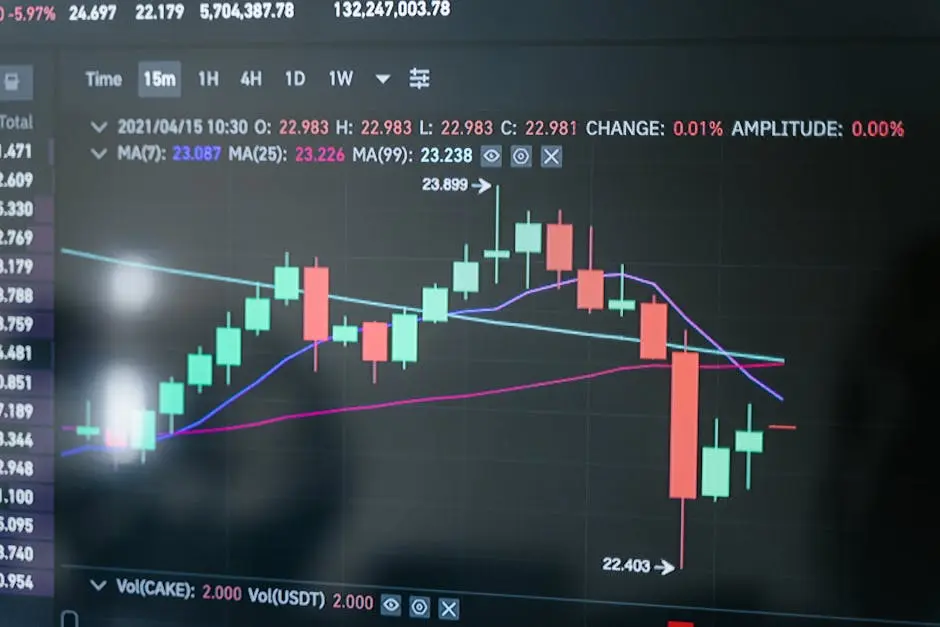Understanding Synthetic Influencers
Synthetic influencers are digital personas created using computer-generated imagery and artificial intelligence. Unlike traditional influencers, they are not tied to any real person. This allows for complete control over their personality, appearance, and behaviors. Companies can craft these influencers to perfectly align with their target audience’s preferences, creating a tailored connection that real-life influencers might not always achieve. These digital figures can also avoid many of the controversies or scandals associated with human influencers, providing a stable marketing platform for brands.
The concept of synthetic influencers is not as futuristic as it might initially seem. Technology verticals are already leveraging it to create AI-generated personalities who can interact and engage with millions of followers on platforms like Instagram. For example, virtual influencers like Lil Miquela have already amassed significant followings, demonstrating how lifelike and effective these digital personas can be in driving engagement and brand loyalty.
One of the primary benefits of synthetic influencers is their ability to maintain consistency in brand messaging. Unlike human influencers, a synthetic persona does not age, nor can they change their style or opinions without company approval. This consistency can be invaluable for brands looking to maintain long-term marketing strategies without the risk of unpredictability associated with human personalities.
Moreover, synthetic influencers present an opportunity for brands to explore new and innovative marketing avenues. They can be programmed to adapt to various cultural and social contexts, broadening their appeal to a global audience. This flexibility allows brands to deploy these influencers in diverse markets, customizing interactions to maximize relatability and effectiveness.
The Rise of Deepfakes in Advertising
Deepfakes refer to hyper-realistic videos or audio clips that are altered using AI technologies. In marketing, these can be used to create compelling and personalized content that resonates with target audiences but also pose risks if used unethically. The advancements in this field have made it possible to create seamless and highly believable content, which can be both an asset and a liability for advertisersDeepfakes at Work: Why AI Videos Are the Future of Marketing.
The potential of deepfakes in advertising lies in their ability to create engaging narratives and captivating visuals that traditional media cannot. They enable brands to engage consumers with innovative storytelling, offering immersive experiences that can be tailored to individual preferences. This approach makes it easier to captivate audiences by presenting them with personalized messages that can lead to higher engagement and conversion rates.
Despite their capabilities, deepfakes come with their own set of challenges. One significant concern is the potential misuse of technology, which could damage a brand’s reputation if consumers feel deceived. It’s essential for marketers to employ deepfakes ethically, maintaining transparency about their use to avoid undermining consumer trust. Moreover, legal implications surrounding privacy and intellectual property must be considered, with ongoing discussions around how best to regulate this dynamic field to protect consumer interests.
Notable examples of deepfakes already in use include projects like the voice petition featuring David Beckham for the ‘Malaria Must Die’ campaign, where Beckham speaks in multiple languages through synthetic manipulationDeepfakes Will Influence The Future Of Marketing — Whether We Want It Or Not. Such campaigns illustrate the potential of deepfakes in combining creativity with cross-cultural impact, effectively engaging audiences worldwide.
Potential Benefits for Brands
Brands can leverage synthetic influencers and deepfakes to create unique and engaging marketing campaigns. These technologies can enhance storytelling, facilitate direct interaction, and even allow brands to reach niche communities effectively. The ability to seamlessly integrate product promotions within a synthesized narrative offers brands newfound creative freedomA Deep Dive Into Marketing with Artificial Intelligence.
One of the most prominent benefits is the cost-effectiveness of digital productions using AI technologies. Deepfakes can drastically reduce production costs by eliminating the need for extensive sets, props, or high-profile celebrities. Instead, brands can create content in a virtual environment, allowing for more frequent and dynamic updates to marketing materials without substantial financial outlays.
Moreover, personalization lies at the heart of effective marketing. With AI and deepfakes, brands can develop content that speaks directly to individuals, enhancing user engagement and satisfactionDigital Influencers, Deepfakes, and the Future of Branding. This approach can lead to deeper emotional connections with brand narratives, fostering loyalty and encouraging repeat interactions.
AI-driven analytics can also assist brands in optimizing their campaigns based on real-time data and customer feedback. Adjustments can be made almost instantaneously, allowing brands to respond swiftly to market trends and consumer preferences. This ability to pivot quickly is a clear competitive advantage, enabling a more agile response to the constantly shifting digital landscape.
Navigating Ethical Considerations
With the advent of these technologies, ethical concerns become critical. It’s important to maintain transparency and authenticity, ensuring consumers are aware when they are interacting with synthetic content. As advertisers navigate these new waters, considerations around privacy, consent, and disclosure must be prioritized to preserve trust and maintain ethical standards within the industry.
The rise of deepfakes demands a stringent ethical framework to prevent their misuse. Brand safety and trust hinge upon clear communication and honesty about the use of such technology. Unchecked, deepfakes carry the risk of damaging brand reputations if misused or if consumers feel misled by synthetic content masquerading as authentic. This necessitates marketers to not only follow legal requirements but also instill internal ethical guidelines.
Furthermore, as deepfake content becomes more prevalent, so does the need for policies that guide their ethical useDeepfake Influencers: The Future of Fashion Advertising?. This includes transparency in their deployment and ensuring that consumer data used in personalization is handled responsibly. Keeping consumer confidence at the forefront will ensure that brands can continue to innovate with these tools without backlash.
Case Studies of Successful Campaigns
Several brands have already showcased successful campaigns using synthetic influencers and deepfakes. These case studies highlight innovative approaches and the impact of these technologies on consumer engagement. For example, the fashion industry has started experimenting with deepfake avatars for showcasing clothing lines, allowing consumers to visualize garments in a highly personalized, interactive format.
Another compelling example is the use of AI-generated videos by high-profile brands to produce engaging commercials without needing physical presence or prolonged production timesDeepfakes at Work: Why AI Videos Are the Future of Marketing. These campaigns not only reached broader audiences but did so with unprecedented cost efficiency, setting a new benchmark for marketing effectiveness.
Furthermore, virtual influencers like Lil Miquela continue to redefine consumer interaction. Collaborations with well-known brands like Prada and Dior have demonstrated the multi-layered appeal of synthetic influencers who can engage a diverse audience across multiple platforms without the unpredictability or vulnerabilities of human influencers.
The Future: Integration and Innovation
As technology continues to evolve, the integration of synthetic influencers and deepfakes within digital marketing strategies is expected to expand. This will drive innovation and redefine how brands interact with their audiences. The symbiosis between advanced AI tools and creative marketing is paving the way for a new era of advertising. Brands need to continuously innovate, leveraging the latest technologies to remain competitive and relevant in the consumer’s eye. The potential is vast, with possibilities ranging from real-time personalized content to interactive consumer experiences that blur the lines between digital engagement and emotional connectivity.
Future advancements might see deeper integrations where voice-activated AI combines with deepfake visuals for even more interactive experiencesDeepfakes Will Influence The Future Of Marketing — Whether We Want It Or Not. Such developments hint at a future where digital marketing transcends traditional boundaries, creating immersive experiences that captivate the senses and hold consumer attention more effectively than ever before.
Ultimately, as digital landscapes shift, brands that embrace synthetic influencers and deepfakes responsibly will be at the forefront of this revolution. By balancing technological innovation with ethical marketing practices, they will not only captivate their audience but solidify their reputation as pioneers in the age of digital transformation. Transparency and authenticity will play crucial roles in this journey, allowing brands to harness these transformative technologies to foster deeper connections with their consumers and remain adaptable in an ever-changing marketplace.
Looking Ahead: Balancing Innovation and Ethics
As we venture into the future of digital marketing, synthetic influencers and deepfakes present unprecedented opportunities and challenges. While they can enhance creativity and engagement, ethical considerations and authenticity must remain at the forefront of marketing strategies. By striking a balance, marketers can harness these technologies responsibly to captivate and connect with their audiences.





